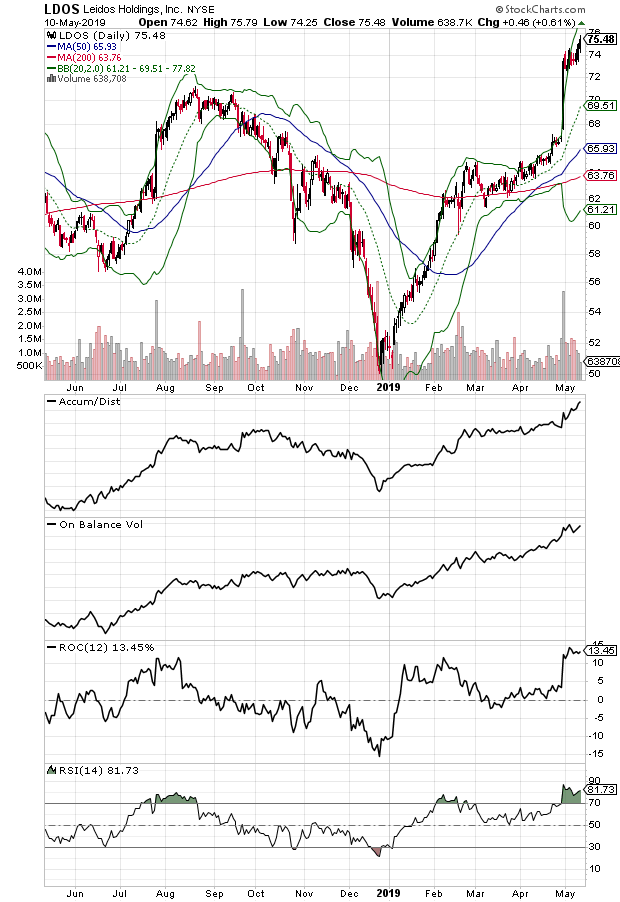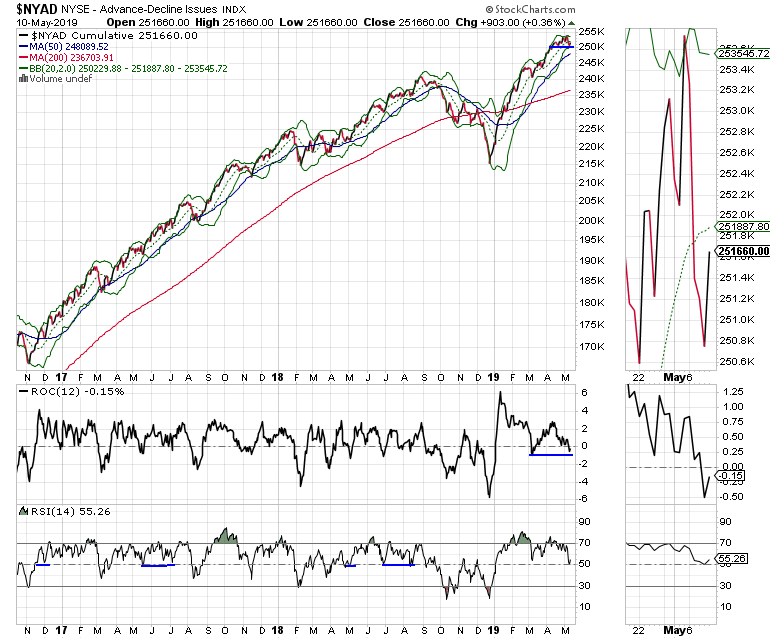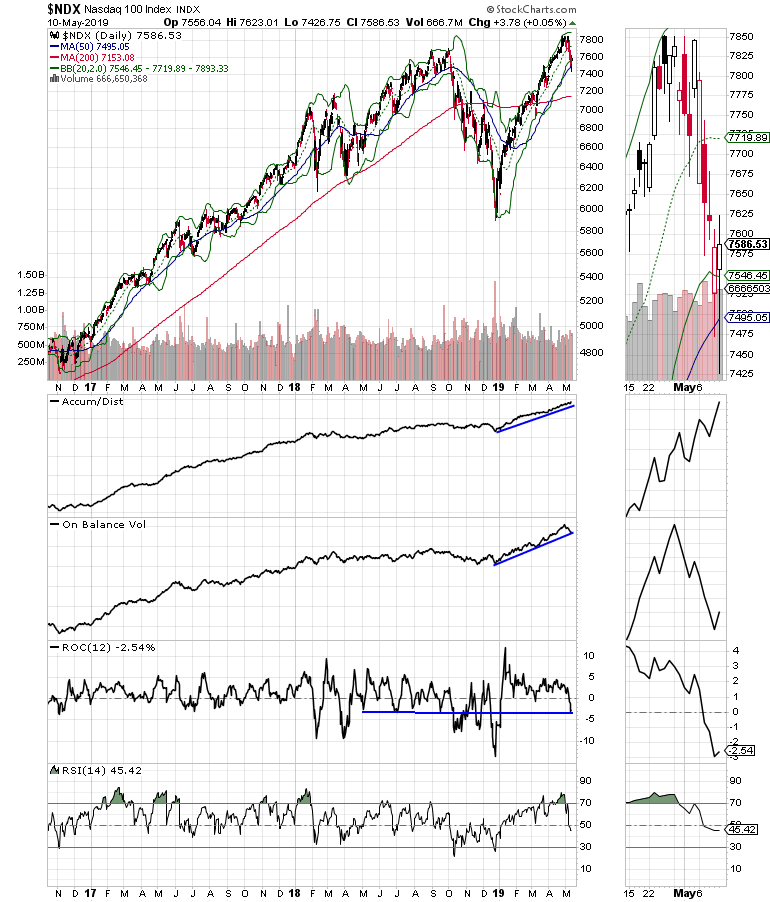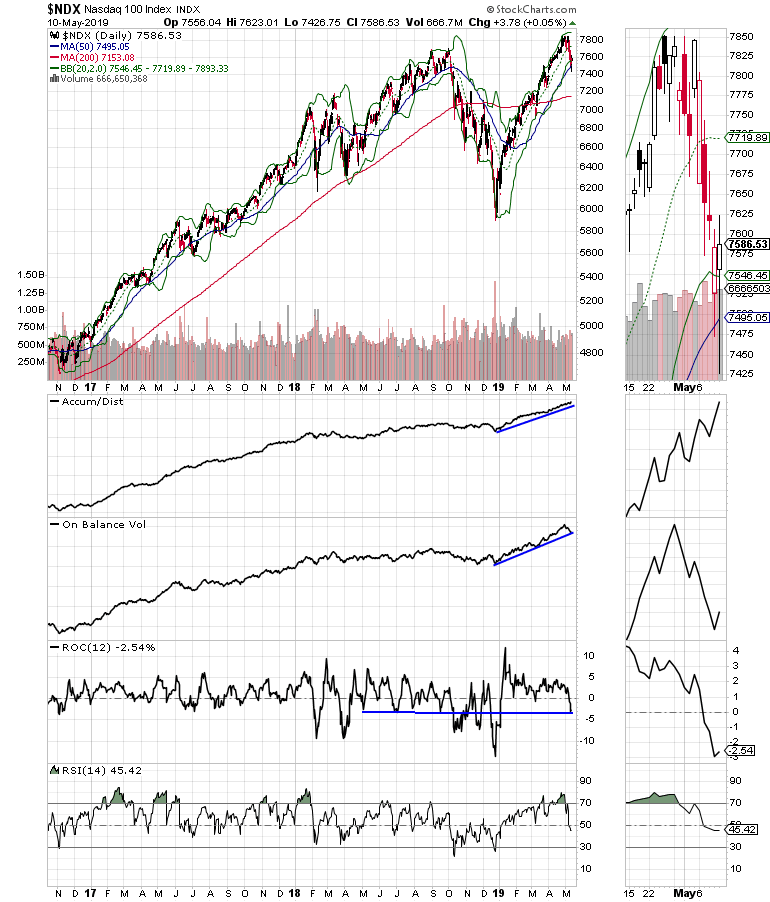Until the Twitter and media war between President Trump and the Chinese over the weekend, I thought a bounce in stocks was likely, writes Joe Duarte.
Until the Twitter and media war between President Trump and the Chinese over the weekend, I thought a bounce in stocks was likely this week. But now it’s about whether there will be a bounce at all or just as likely a resumption of the selling. Moreover, it’s more about whether the bounce, if it materializes, is credible and manages to hold.
The problem is that the one thing the market was betting on, a trade deal between the U.S. and China is now highly uncertain. Of course, if there is a positive surprise somewhere along the way we may well be off to the races again. But as things stand, there is no certainty of that and perhaps no deal will ever actually get done. Therefore, investors are now more than ever at the mercy of the algos, the headlines, and the egos of politicians and bureaucrats in Washington and Beijing.
Last week, I noted: “I was reasonably positive on the stock market until mid-day Sunday based on what seemed to be increasing upside momentum and subtle but hopeful changes in the housing and restaurant sector, which suggested consumers are resting a bit easier at the moment. But after President Trump’s tariff threat against China, we’ll have to see how things develop.” And develop things did as the market sold off aggressively before Friday’s predictable algo triggered reversal.
Interestingly some stocks managed to survive the onslaught. And these are the stocks which, over time once the dust settles could be part of the leadership for the next leg up in the market, whenever that is.
One of them, Leidos Holdings (LDOS), a software company specializing in intelligence and other government contracts, which we’ve owned since April 1, has expanded its recent move making a new high after a better than expected earnings report (see chart). The company seems to be well positioned for the future with CEO Roger Krone citing increasing bookings and a rising backlog of orders in the pipeline during the recent conference call.

Accordingly, it’s not likely a coincidence that LDOS managed to thrive last week or that its book of business looks robust. Given its line of business – spying software, likely for the National Security Agency, the Department of Defense, and God knows whom else; LDOS seems to be a stock whose time has come given the general state of global uncertainty.
Market Breadth Hits Oversold Levels
This may be for naught, given the rising war of words between China and the U.S. over the weekend. But here goes anyway. The New York Stock Exchange Advance Decline line (NYAD), the most accurate indicator of the market’s trend since the presidential election of 2016 rolled over last week and crashed below its lower Bollinger Band on an intraday basis on May 9, 2019, mirroring the action of the prior week when the line soared above the upper band and signaled a reversal to the down side. However, NYAD managed to recover from that breach and ended the week on a tentative, but nevertheless positive note.

Breaches of the upper or lower Bollinger bands are important signals as they often mark the possibility of a trend reversal, as the May 3, 2019 breach of the upper band clearly did. Now, we have to wait and see what happens in response to the breach of the lower band from May 9. A clue as to the future may hold is the action in the RSI indicator for NYAD which is near the 50 area. Note the support lines on the Relative Strength Index (RSI), which show that when this indicator has held above 50 since 2016, the odds favor a reversal to the upside.
Based on this particular set of observations it is possible, although not guaranteed that a significant amount of selling has already taken place and thus, barring another major external event, the odds of another leg up are likely better than even.

Meanwhile the S&P 500 (SPX) and Nasdaq 100 (NDX) indexes were within a hair’s breadth of their all-time highs. This is likely to change rapidly in the short term (see charts).

For their part, the S&P 500 (SPX) and the Nasdaq 100 (NDX) did not fully break down either, which also added to the positive tone after the selling last week.

In fact, despite the selling pressure, and even though both indexes broke below the support of the 20-day moving averages they successfully survived tests of their respective 50-day moving averages after they breached their lower Bollinger Bands on an intraday basis, mirroring the action in the NYAD.
It’s not the bounce but the nature of the bounce
The stock market is poised for some sort of oversold rally attempt in the next few days. And although a respite from the selling will be welcome, it’s more about whether the bounce holds than whether it happens. Thus, if any rally fails, it will likely mean that the selling will accelerate.
Subscribers to this service hedged their bets last week. Thus, if the bounce fails, they will have some protection as we make further decisions. For the moment, it’s all about managing risk by sticking with what’s working, hedging long positions, and letting the market make your selling decisions via well placed sell stops.
Otherwise, I am compiling a potential buy list and will deploy the best candidates in due time.
I have an open position in LDOS as of this writing.
Joe Duarte has been an active trader and widely recognized stock market analyst since 1987. He is author of Trading Options for Dummies. Or pick up his new book: Pick up a copy of The Everything Guide to Investing in your 20s & 30s at Amazon.





















